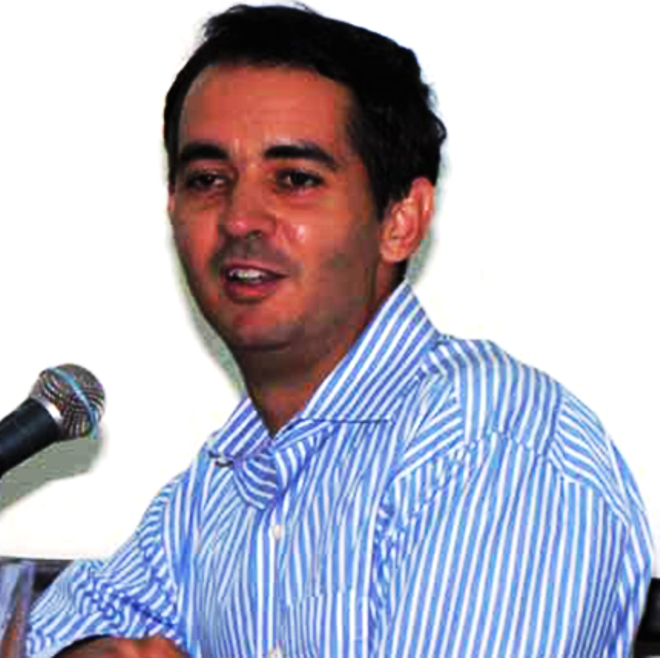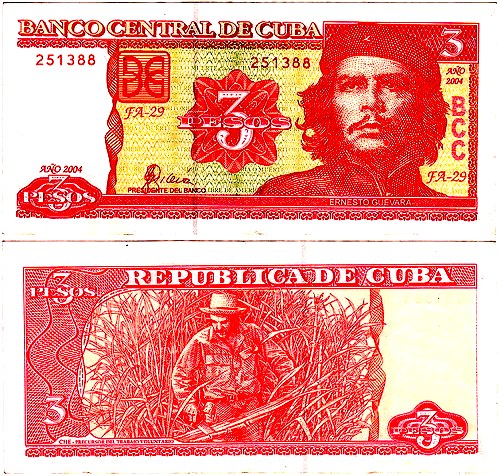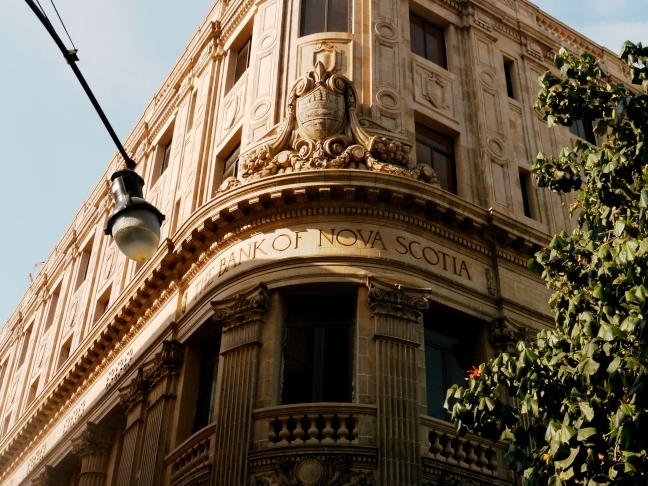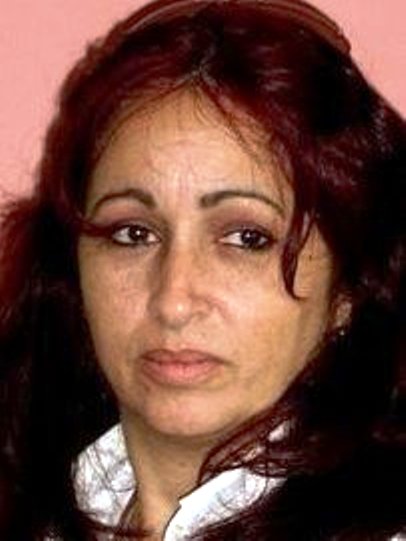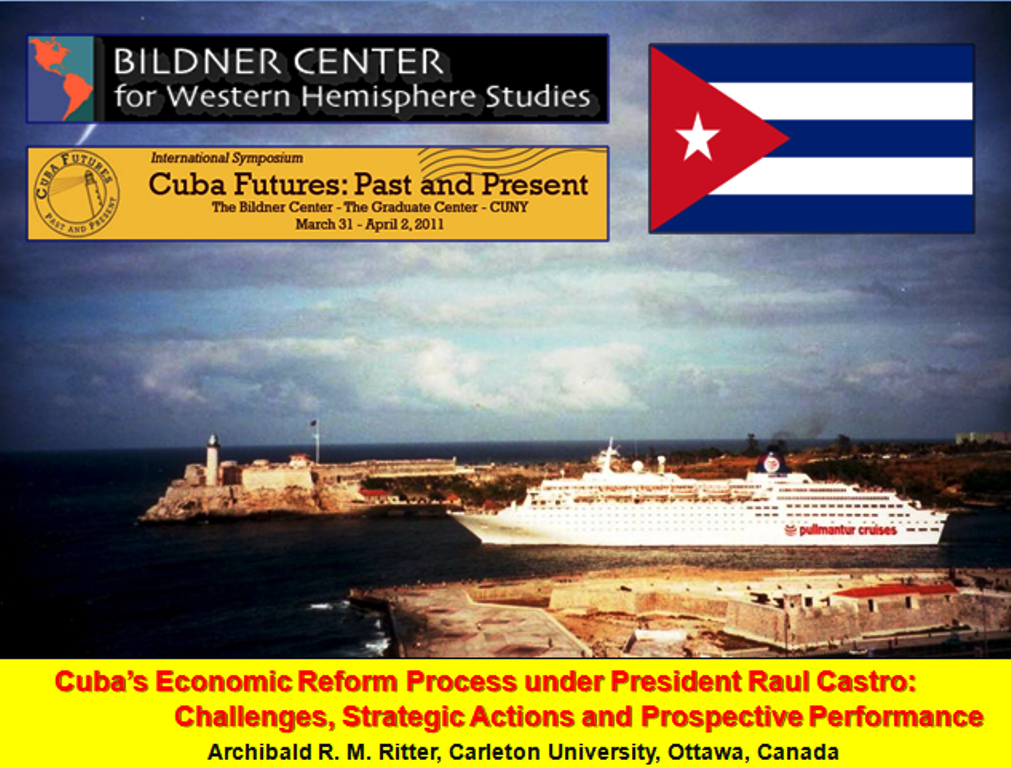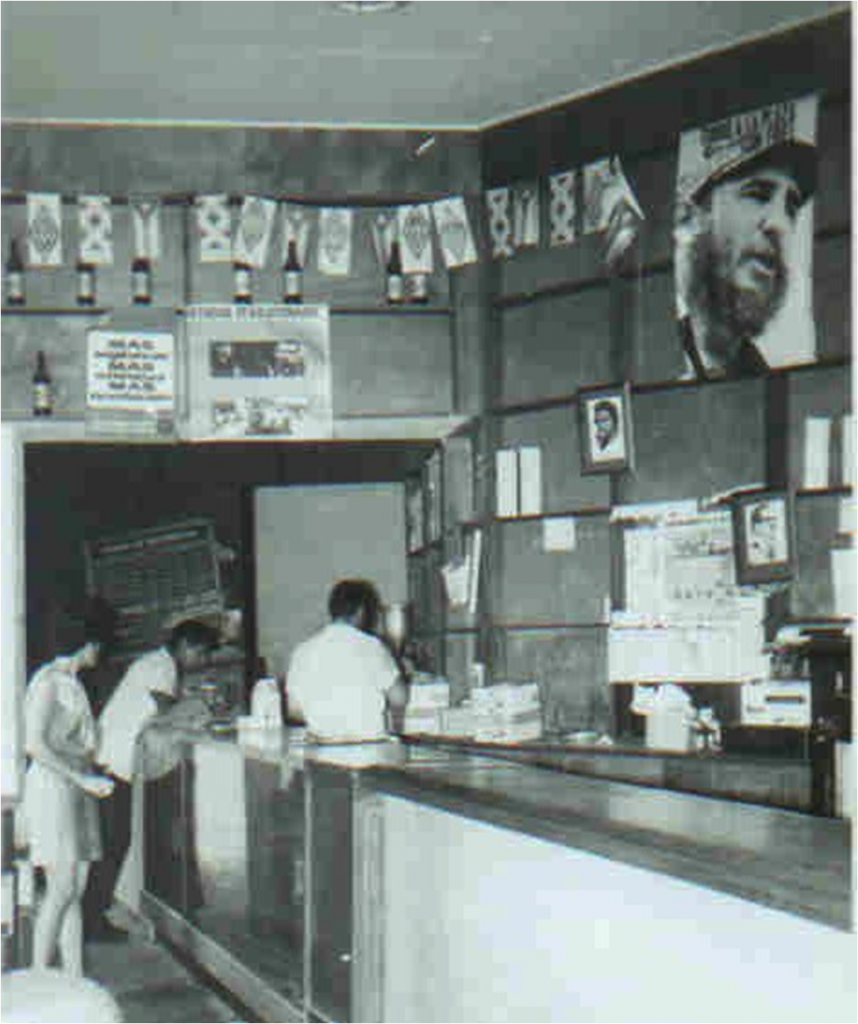Oscar Chepe’s recent work on Cuba’s economic situation and the reform process has just been published and is available on the web site: Reconciliación Cubana, or here: Oscar Chepe, Cambios Cuba: Pocos, Limitados y Tardíos
Oscar continues to be a courageous and outspoken analyst of Cuba’s economic policies. In this past, this earned for him a period of forced labor in the 1960s and incarceration in March 2003 along with 75 others. Despite this, he continues to express his views openly and honestly. Although his voice is heard easily outside his own country, within Cuba, his views unfortunately are blocked rather effectively by state control of the publications media, the electronic media and by the continuous violation of the right to freedom of assembly.
Below is a Table of Contents followed by an Executive Summary by Rolando Castaneda.
Table of Contents:
Prologo por Carmelo Mesa Lago 1
Resume Ejecutivo por Rolando Castañeda 6
I. Introducción 11
II. Pequeñas y medianas empresas 14
III. Actualización del modelo económico cubano 16
IV. Problemas de orden externo e interno 19
V. La empresa estatal socialista 22
VI. Mercados mayoristas, precios 24
VII. Cooperativas 27
VIII. Política fiscal 29
IX. Políticas macroeconómicas 31
X. Política monetaria 34
XI. Política económica externa 37
XII. Inversión extranjera 40
XIII. Política inversionista 43
XIV. Ciencia, tecnología e innovación 45
XV. Política social 47
XVI. Salud 51
XVII. Deporte 54
XVIII. Cultura 56
XIX. Seguridad social 59
XX. Empleo y salarios 61
XXI. Política agroindustrial 64
XXII. Política industrial y energética 68
XXIII. Política energética 71
XXIV. Turismo 74
XXV. Política de transporte 77
XXVI. Construcciones, las viviendas y los recursos hidráulicos 79
XXVII. Comercio 82
XXVIII. Conclusiones 84
A 20 años de Primer Informe de Desarrollo Humano de ONU 87
Cuba Bordeando el Precipicio 90
La Economía Cubana en 2010 93
Cuba: Un Principio Espeluznante 100
 Oscar Chepe and Miriam Leiva, February 2010. Photo by Arch Ritter
Oscar Chepe and Miriam Leiva, February 2010. Photo by Arch Ritter
Resumen Ejecutivo, por Rolando Castañeda
Planteamiento general
Los instrumentos aprobados por el gobierno para la implementación del trabajo por cuenta propia, el proceso de la reducción de las plantillas infladas, el recorte de los gastos sociales y el Proyecto de Lineamientos de la Política Económica y Social, revelan pocos, parciales e insuficientes cambios, que no solucionarán la crisis socioeconómica existente.
El gobierno sólo actualiza (“le pone parches”) a las fuentes principales de los problemas actuales: el sistema socioeconómico, que no ha funcionado, es irreparable y está mal gestionado, así como el régimen político totalitario carente de libertades civiles fundamentales. Ellos han llevado al desastre, la dependencia externa e impiden la sustentabilidad económica.
La baja eficiencia, la descapitalización de la base productiva y de la infraestructura, el envejecimiento y estancamiento en el crecimiento poblacional, entre otros muchos males, son consecuencias de ese modelo.
El gobierno elude medidas indispensables mientras propone unas pocas medidas insuficientes, llenas de limitaciones y prohibiciones. También reitera sin corregir apropiadamente medidas anteriores que han sido implementadas con muchas limitaciones y sin tener una concepción integral de la economía, tales como: la entrega de tierras en usufructo, el pago por resultado a los trabajadores y los recortes fiscales.
Los Lineamientos definen que primará la planificación y no el mercado, o sea continuará la burocratización de la sociedad, bajo rígidas normas centralizadoras, que imposibilitan la flexibilidad requerida por la actividad económica y la vida en general de la nación. No se reconoce la propiedad privada y se subraya la política de no permitir el crecimiento de la actividad individual.
La seria contradicción de una política con ribetes neoliberales de drásticos recortes, sin que se brinde a los ciudadanos posibilidades reales de ganarse el sustento decentemente, e incluso aportar de forma racional a los gastos del Estado, podría determinar convulsiones sociales, en un ambiente ya permeado por la desilusión y la falta de esperanza.
El despido de trabajadores y el trabajo por cuenta propia
El vital proceso de racionalización laboral, con el despido hasta abril de 2011 de 500.000 trabajadores considerados innecesarios, el 10% de la fuerza de trabajo ocupada, para continuar haciéndolo posteriormente con otros 800.000, que fue postergado por tantos años, ahora se pretende realizar de forma muy rápida. No se ha contado con la preparación apropiada ni la organización para que tenga éxito en un plazo tan breve y se pueda reubicar una cantidad tan grande de despedidos. Ni siquiera se han modificado los artículos de la Constitución Política (i.e. el 21 y el 45) que se contraponen a lo propuesto.
Al desestimulo por los bajos salarios, la carencia de información técnica, el vacío de reconocimiento social y las generalizadas malas condiciones laborables, a las nuevas generaciones de estudiantes se une ahora la incertidumbre de hallar empleo futuro por el despido masivo de trabajadores.
El trabajo por cuenta propia en sólo 178 actividades permitidas que deberá absorber el despedido masivo de trabajadores, enfrenta graves limitaciones, más severas que las existentes para las empresas estatales y las mixtas con capital extranjero. Incluyen los impuestos por seguridad social del 25% que el trabajador por cuenta propia deberá contribuir, así como los trabajadores que se contraten con base en un salario fijado por el gobierno, a un nivel 50% mayor que el salario medio prevaleciente. También están los elevados impuestos sobre los ingresos personales que pueden llegar hasta el 50% cuando excedan de $50,000 anuales, y las restricciones a los gastos de operación que se permiten deducir de los ingresos brutos para fines tributarios, en algunos oficios de sólo hasta el 10% de los ingresos anuales.
A ello hay que añadir algunas prohibiciones arbitrarias, tal como las sobre el número de sillas de los restaurantes (20) y las barberías (3), así como la ausencia de un mercado mayorista de abastecimiento de insumos. Hasta tanto ese mercado no aparezca, continuará desarrollándose la ilegalidad y, sobre todo, el robo de los recursos estatales, estimulado por el extendido descontrol existente y el miserable salario de los trabajadores. ‘
De esta forma el Estado reduce la actividad individual a iniciativas arbolitos bonsái e impide el crecimiento del trabajo por cuenta propia y el surgimiento de pequeñas y medianas empresa. Un mecanismo configurado para mantener el estrecho control del Estado-Partido sobre la sociedad, temeroso de que el fortalecimiento y desarrollo de la actividad privada pueda convertirse posteriormente en un peligro.
Aspectos generales y macroeconómicos
La mayoría de los Lineamientos sobre aspectos generales, macroeconómicos y sectoriales son enunciativos, generalidades que soslayan la grave situación con la continuada acumulación de graves problemas y sin proponer soluciones reales para los mismos. Desafortunadamente, los cambios requeridos no se avizoran. Este conjunto de 28 artículos se refiere a estos temas y por qué considera que su tratamiento es insuficiente para una sociedad estatizada, llena de distorsiones y carente de racionalidad económica
El problema de la descapitalización física es sumamente serio. Desde inicios de los años 1990 se mantienen tasas de formación bruta de capital fijo en relación con el PIB usualmente inferiores al 10%, menores a las tasas de amortización de los medios de producción y la infraestructura, aceleradas por la falta de reposición, actualización tecnológica y mantenimiento adecuado.
Desprovisto el país de la “ayuda” a inicios de 1990, empezó el deterioro paulatino de la salud pública, la educación, la seguridad social, el deporte y la cultura, con una incidencia muy negativa en los salarios, que como indicara el presidente Raúl Castro el 26 de julio de 2007 son insuficientes para vivir. La permanencia de los esquemas sociales con oportunidades de acceso para todos está en peligro debido a la falta de sustentación económica.
Resulta indispensable introducir tasas de cambio reales. Las tasas actuales, recargadas por gravámenes absurdos, que pueden conducir a análisis distorsionados y por consecuencia a decisiones equivocadas. En especial respecto a la política de inversiones, el comercio exterior y otros aspectos vitales para el desarrollo nacional. Una moneda sobredimensionada representa un serio obstáculo para el crecimiento de la llegada de turistas, al reducir arbitrariamente la competitividad del mercado cubano.
Cuba paga intereses bancarios muy altos a los prestamistas extranjeros; sin embargo, a los nacionales se les abonan intereses sumamente bajos, incluso por debajo de las tasas de inflación reales. Es necesario motivar a la población a depositar sus ahorros en los bancos, en especial aquellos en moneda convertible, dándosele las debidas garantías y el pago de intereses estimulantes y acordes con la situación financiera del país.
El gobierno no contempla la participación de la comunidad cubana en el exterior en la reconstrucción nacional. Un sector de nuestro pueblo que, con el otorgamiento de las garantías necesarias, podría ser fuente de importantes recursos financieros, tecnologías avanzadas, conocimiento y experiencia en la gestión de negocios y posibles nuevos mercados. Habría que adoptar una política pragmática e inteligente de acercamiento a nuestros hermanos en el extranjero, muy en especial hacia la comunidad afincada en EEUU, que además podría ser un puente para mejorar las relaciones con ese país, con enormes beneficios para nuestra economía.
Aspectos sectoriales
En los aspectos sectoriales de los Lineamientos se habla mucho acerca de ejecutar proyectos e inversiones, de potenciar capacidades de diseño y proyección, y fortalecer determinadas capacidades, pero no se define como hacerlo ni como financiarlo.
La esencia de los problemas nacionales, pueden hallarse en la destrucción de la agricultura que ha provocado una extraordinaria dependencia de alimentos importados, incluido azúcar, café y otros muchos que antes Cuba exportaba, mientras, los Lineamientos, reconocen que “ …las tierras todavía ociosas,.. constituyen el 50%…”. El sector está afectado por los precios fijados por el Estado unilateralmente por debajo del mercado, con frecuentes largas demoras en los pagos y las tradicionales deficiencias en la gestión de las empresas acopiadoras oficiales. Las tiendas abiertas para la venta de herramientas e insumos tampoco constituyen una solución, los precios son demasiado altos.
Las Cooperativas de Crédito y Servicios (CCS), donde los productores con muchas dificultades mantienen sus tierras individualmente, con sólo el 18% de la superficie agrícola total (cierre de 2007) han generado tradicionalmente más del 60% de la producción agrícola nacional, así como el más bajo por ciento de tierras ociosas, a pesar de la crónica falta de recursos, el permanente hostigamiento, las prohibiciones y la obligatoriedad de entregar las cosechas total o parcialmente al Estado en las condiciones y a los precios arbitrarios fijados por él.
En este escenario si se continúa con la mentalidad de ejercer estrictos controles sobre los posibles cooperativistas y negando la voluntariedad como concepto básico para la formación de las cooperativas, por muchos “buenos deseos” e indefinidos planteamientos que existan, el movimiento cooperativo no avanzará.
En la industria se refleja con mayor fuerza el proceso de descapitalización generalizado desde principios de la década de 1990. Por ello se requiere con urgencia su modernización y reequipamiento para poder detener la tendencia al actual atraso tecnológico, e incluso la paralización del sector. En 2009 se alcanzó una producción correspondiente al 45% de 1989, incluida la industria azucarera. Si se excluyera esta industria, el indicador sería del 51%. La producción nacional de materiales de construcción es muy baja, con un índice de volumen físico, al cierre de 2009, solo del 27% del nivel de 1989.
El gobierno cubano no publica los ingresos netos por concepto de turismo, por lo cual es difícil evaluar con precisión sus beneficios. Debido al pobre desarrollo de la economía cubana, se importa muchos productos consumidos por los visitantes. Esta actividad podría ser una de las locomotoras que impulse las demás ramas de la economía, pero para ello habría que realizar reformas estructurales, que reduzcan radicalmente la dependencia del exterior.
Conclusión
El aniquilamiento de los sueños de un futuro más justo y próspero para Cuba, podría detenerse si se propiciara un proceso de reconstrucción radical, con el abandono de los dogmas que tanto daño han hecho. Cuba posee significativas reservas productivas inexplotadas y un pueblo que debidamente estimulado, con libertad para crear, podría sacar a la nación de la crisis. Para ello resulta indispensable un nuevo modelo económico, político y social en el cual participarían en paridad de derechos y deberes las iniciativas públicas y privadas, estableciéndose un círculo virtuoso propiciador de desarrollo, que en la medida en que progresen ambas iniciativas se beneficie el país con mayores niveles de eficiencia, así como más y mejores productos, y el incremento del pago de impuestos que haga sostenible la financiación de la educación, salud pública, seguridad y asistencia social, y otros.


